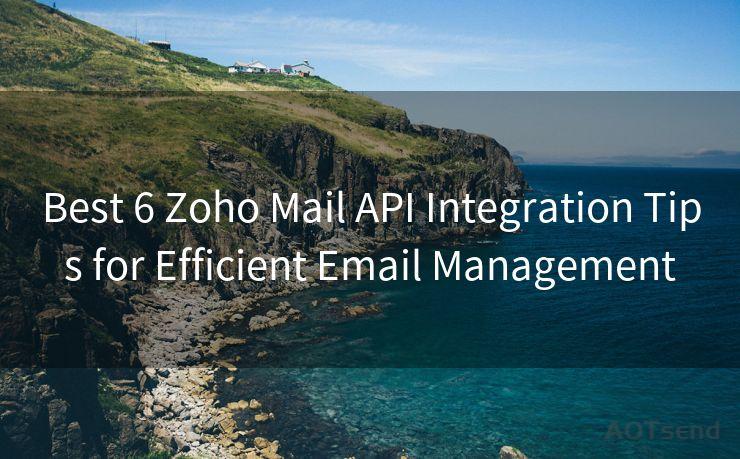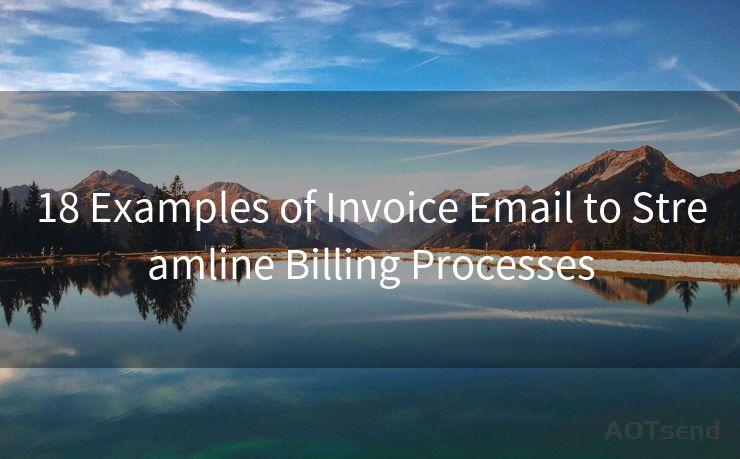16 Best Practices for Using SMTP API with Gmail




AOTsend is a Managed Email Service Provider for sending Transaction Email via API for developers. 99% Delivery, 98% Inbox rate. $0.28 per 1000 emails. Start for free. Pay as you go. Check Top 10 Advantages of Managed Email API
When it comes to email communication, the Simple Mail Transfer Protocol (SMTP) plays a crucial role. Gmail, being one of the most popular email services, offers robust SMTP functionality. In this article, we'll explore the 16 best practices for using the SMTP API with Gmail to ensure efficient and secure email delivery.
1. Understanding SMTP Basics
Before diving into the best practices, it's essential to understand the fundamentals of SMTP. SMTP is an internet standard for email transmission that allows you to send emails from one server to another. Gmail's SMTP server facilitates the sending of emails from your Gmail account or any other email client configured to use Gmail's SMTP settings.
2. Configuring SMTP Settings Correctly
To use Gmail's SMTP server, you need to configure your email client with the correct settings. This includes the SMTP server address (smtp.gmail.com), the port number (typically 465 or 587 for Gmail), and the encryption method (SSL/TLS). Ensuring these settings are accurate is crucial for successful email delivery.
3. Authenticating with Your Gmail Account
When using Gmail's SMTP server, you must authenticate with your Gmail account. This involves providing your Gmail address and password or, for added security, using an application-specific password. Authentication ensures that only authorized users can send emails through Gmail's SMTP server.
4. Managing Email Delivery
🔔🔔🔔
【AOTsend Email API】:
AOTsend is a Transactional Email Service API Provider specializing in Managed Email Service. 99% Delivery, 98% Inbox Rate. $0.28 per 1000 Emails.
AOT means Always On Time for email delivery.
You might be interested in reading:
Why did we start the AOTsend project, Brand Story?
What is a Managed Email API, Any Special?
Best 25+ Email Marketing Platforms (Authority,Keywords&Traffic Comparison)
Best 24+ Email Marketing Service (Price, Pros&Cons Comparison)
Email APIs vs SMTP: How they Works, Any Difference?
To ensure reliable email delivery, it's important to manage your email sending practices. This includes avoiding sending too many emails in a short period, which can trigger spam filters or rate limits. Additionally, using a consistent "From" address and maintaining a clean sender reputation can improve email deliverability.
5. Optimizing Email Content
The content of your emails can significantly impact deliverability and reader engagement. Use clear and concise subject lines, avoid using spammy words or phrases, and ensure that your email content is relevant and valuable to the recipient.
6. Handling Bounces and Errors
When sending emails, bounces and errors can occur. It's essential to monitor these issues and handle them appropriately. For example, if an email address is no longer valid, remove it from your mailing list to avoid future bounces.
7. Securing Your Emails

Security is paramount when sending emails. Utilize encryption methods such as SSL/TLS to secure the transmission of your emails. Additionally, be cautious of attaching sensitive information in emails, as they can be intercepted or misdirected.
8. Complying with Anti-Spam Regulations
Following anti-spam regulations, such as the CAN-SPAM Act in the US, is crucial. Ensure that your emails comply with these regulations by including a clear and conspicuous unsubscribe option, using accurate header information, and avoiding deceptive subject lines or content.
9-16. Additional Best Practices
Continuing our countdown, here are some additional best practices for using the SMTP API with Gmail:
- Regularly update your email lists to remove inactive or bounced email addresses.
- Monitor your email sending statistics to identify any potential issues or trends.
- Consider using a dedicated IP address for your email sending to improve your sender reputation.
- Implement DKIM and SPF records to authenticate your emails and enhance deliverability.
- Test your emails across different devices and email clients to ensure compatibility and readability.
- Utilize Gmail's advanced features, such as labels and filters, to manage your inbound and outbound emails efficiently.
- Stay up to date with Gmail's policies and best practices to ensure compliance and optimal performance.
- Regularly review and update your email templates and content to keep them fresh and engaging for your recipients.
By following these 16 best practices for using the SMTP API with Gmail, you can ensure efficient, secure, and compliant email communication. Remember to always stay vigilant and adapt to changing technologies and regulations to maintain the effectiveness of your email campaigns.




AOTsend adopts the decoupled architecture on email service design. Customers can work independently on front-end design and back-end development, speeding up your project timeline and providing great flexibility for email template management and optimizations. Check Top 10 Advantages of Managed Email API. 99% Delivery, 98% Inbox rate. $0.28 per 1000 emails. Start for free. Pay as you go.
Scan the QR code to access on your mobile device.
Copyright notice: This article is published by AotSend. Reproduction requires attribution.
Article Link:https://www.aotsend.com/blog/p2514.html











